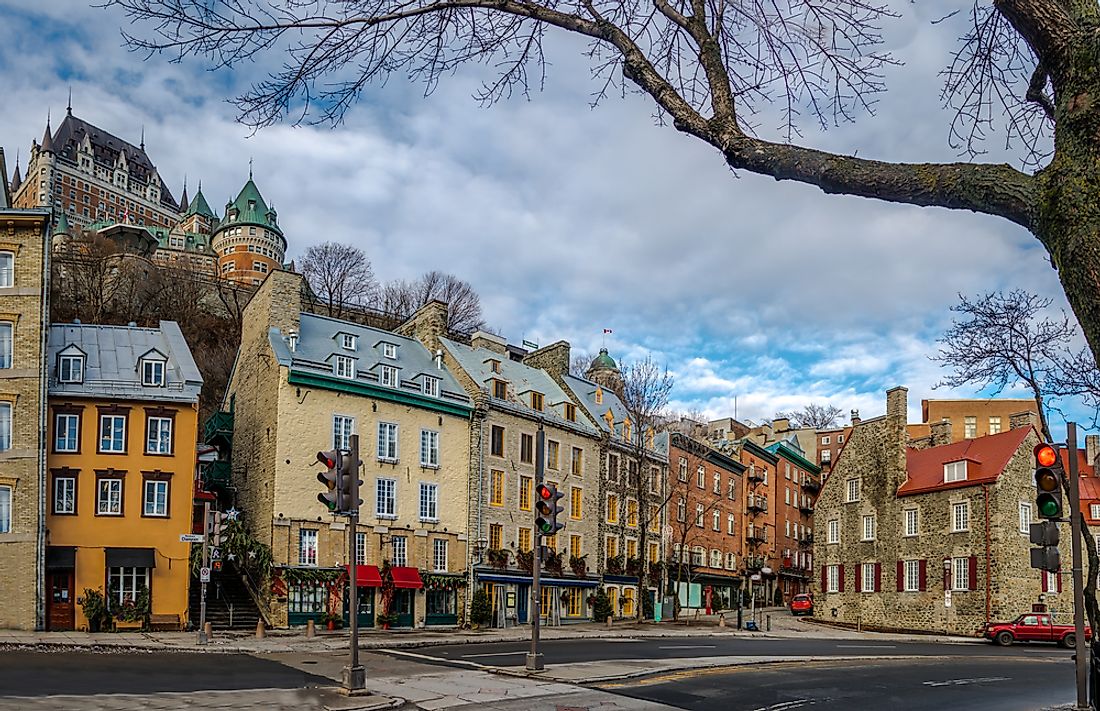What Is the Capital of Quebec?

Quebec is a Canadian province whose residents are predominantly French-speaking. It is the largest province by area, second most populous, and second-largest administrative division in Canada bordering Hudson Bay, Ontario, James Bay, Gulf of Saint Lawrence, Ungava Bay, Hudson Strait, Newfoundland and Labrador, Prince Edward Island, Nova Scotia, and New Brunswick. Internationally, the province borders the US states of New York, Vermont, New Hampshire, and Maine. Quebec City is the capital of Quebec. The name Quebec originates from the French word Kébec loosely translating to "where the river narrows". Quebec city rests at the narrowing of the Saint Lawrence River as the river meets the St. Charles River, opposite the Lévis.
Geography, Governance and Other Facilities Of The Capital City Of Quebec
The surrounding area of Quebec City is flat with river valleys rich in fertile soils and the Laurentian Mountains located to the north. The Old Quebec area and parts of the city lie on the promontory of Quebec (a plateau). There is an unofficial division of the city into two parts namely the Cap-Diamant promontory (upper town) and the lower town located at the foot of the plateau. Quebec City experiences a humid continental climate characterized by warm summers, high humidity, as well as cold, windy, and snowy winters. There are occasional heat waves during summers while spring and fall are usually short with temperatures ranging from chilly to warm. Annually, the city receives 35.39 inches of rainfall and 124.4 inches of snowfall. The possibility of sunshine is 41.5% yearly (1,916 hours of bright sunshine). Quebec City consists of six boroughs divided into 35 districts with names and numbers. Through public participation, the districts elect council members while the whole city elects the mayor. There are over 100 gardens and parks open for the public to hike, canoe, and watch birds. The Battlefields Park is also a great tourist attraction as it has as many as 50 historical military weapons and other historical structures including Joan of Arc and the Martello Towers
Demographics Of The Capital Of Quebec
The 2016 Canadian statistics indicate that 531,902 (48.3% male and 51.8% female) people live in Quebec City and 800,296 people in the metropolitan area of the city. About 4.7% of the population is consists of children under five years. More than a third of the city‘s population speaks both French and English while 94.6% use French as a mother tongue. The average population age is 39.5 years, and 13% of the people prefer to retire at 65 years of age. Quebec City has a population density of 592 people per square mile, and a population growth of 6.5% experienced between 2006 and 2011. Estimates show that the city is predominantly Catholic with over 90% professing the faith, followed by a sizeable number of Protestants and a small Muslim and Jewish communities.
Other Attractions in Quebec City
One of the greatest stories of the capital city of Quebec is that it was the site of the 1775 American Revolution Battle (Battle of Quebec) when the British managed to hold onto their North American Territory. The city is not only beautified with unique architectural buildings, but also has a rich and jovial culture marked with festivals, winter sports, and a rich French language. With dependable public infrastructure system, the city is also one of the safest with only two murders recorded in 2015.







